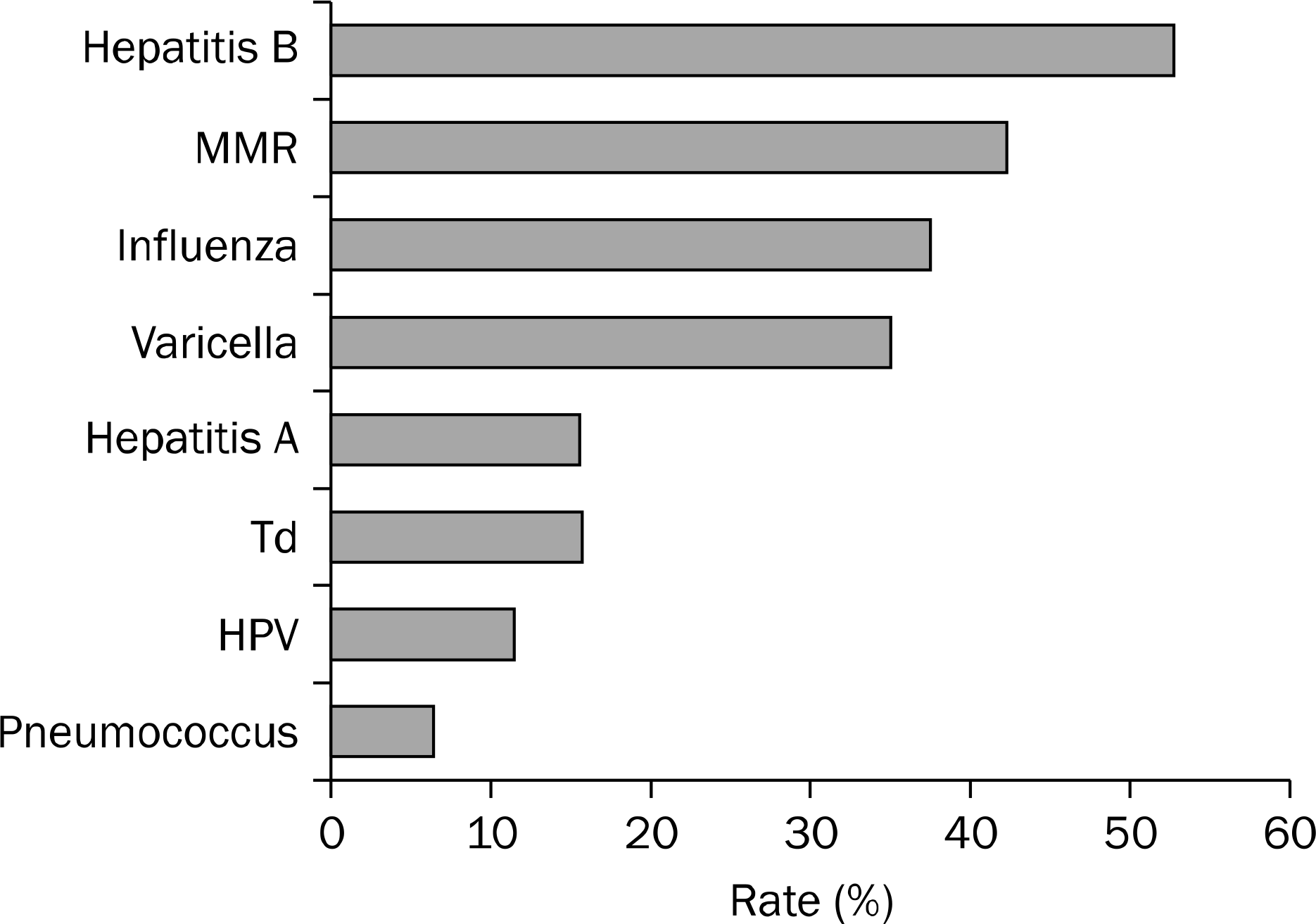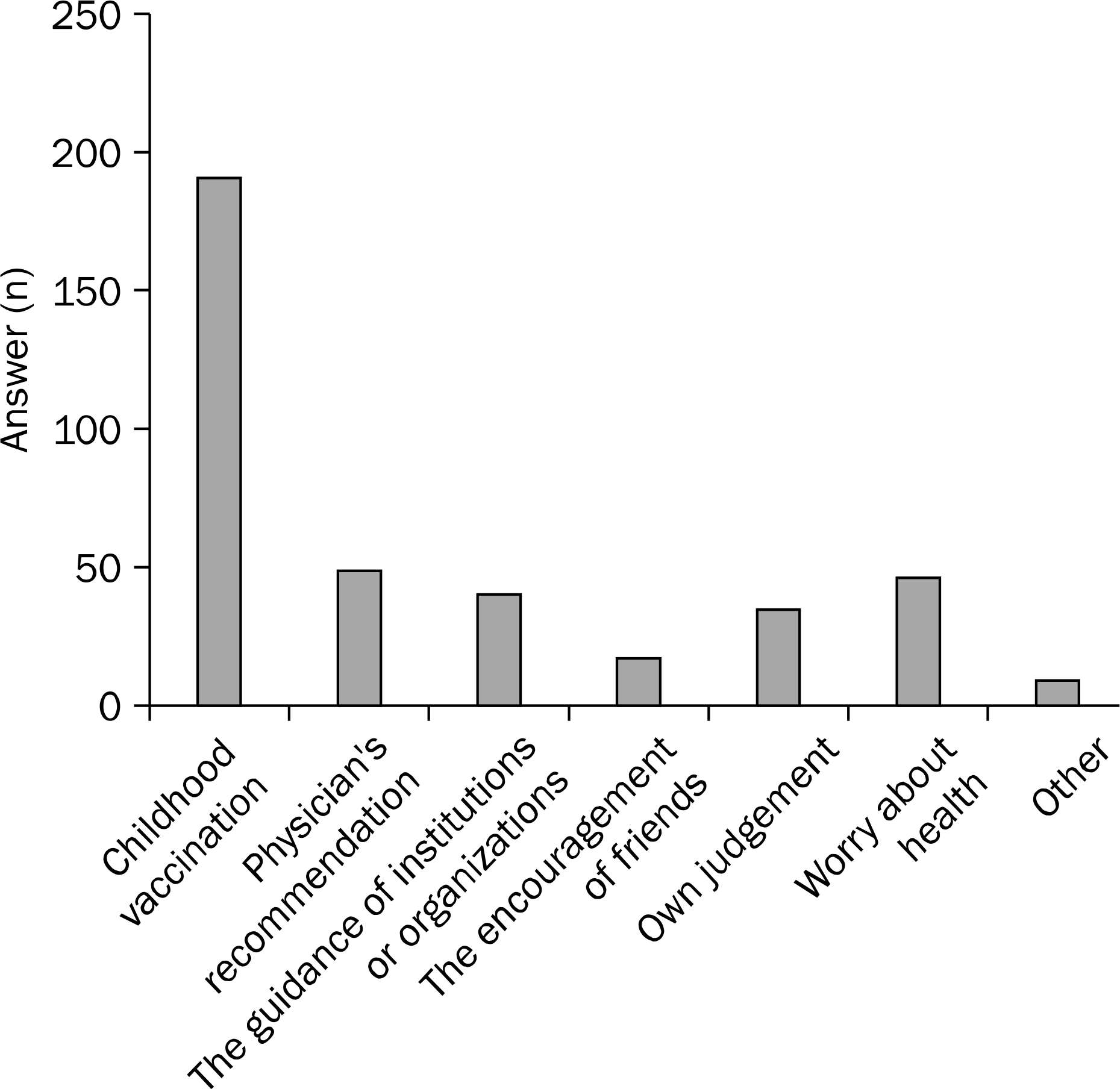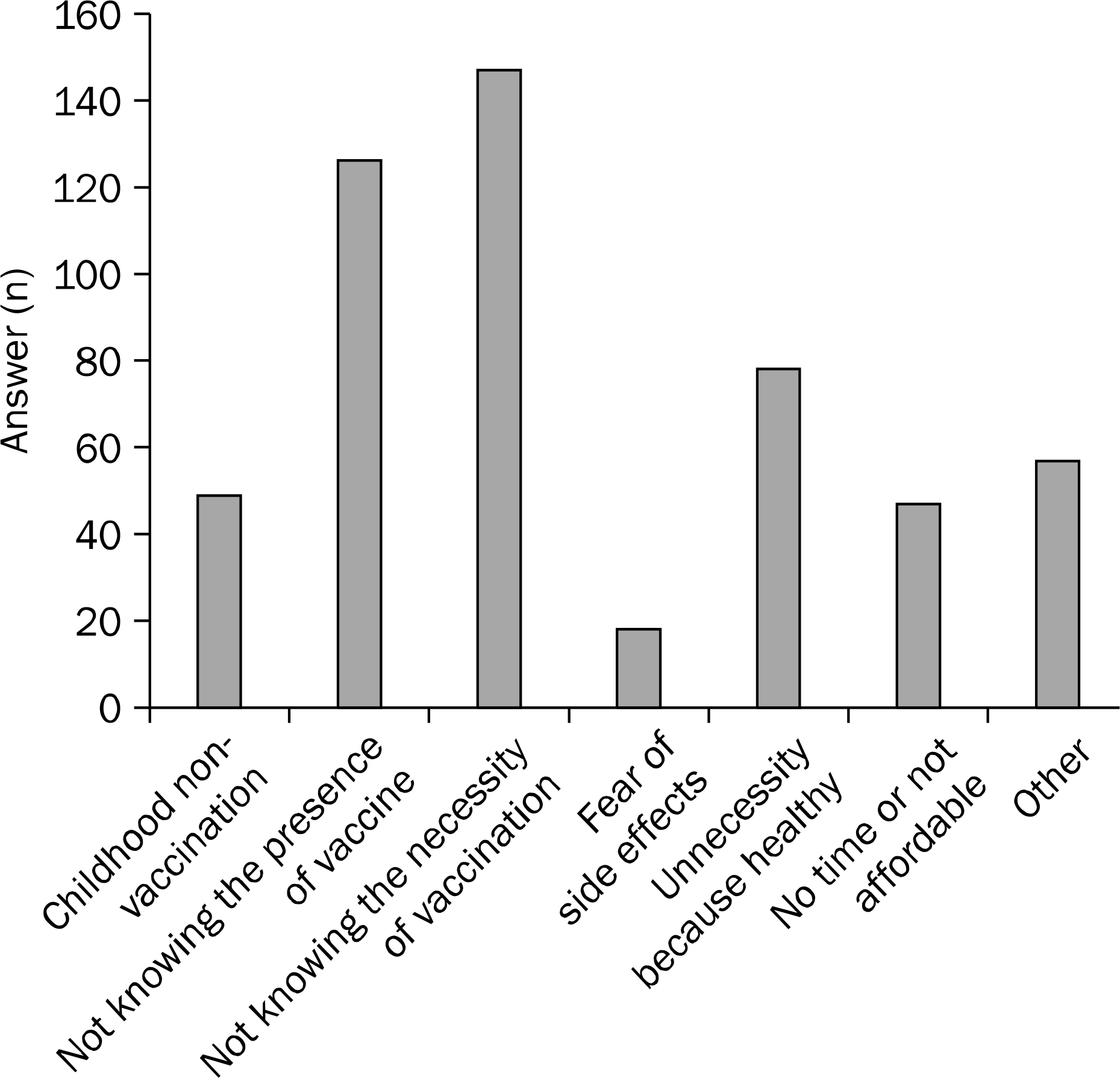Abstract
Background/Aims
Vaccinations are generally recommended in patients with inflammatory bowel disease (IBD). However, several studies showed low rates of vaccinations in IBD patients. Furthermore, vaccination rate among IBD patients in Korea has never been investigated. We investigated the vaccination rate among IBD patients in Korea and evaluated some factors that might affect the vaccination rate.
Methods
From November 2011 to February 2012, a total of 192 patients with IBD who visited Samsung Medical Center (Seoul, Korea) answered the IRB-approved questionnaire. The questionnaire included their sex, age, residence, past medical history, type of IBD, duration of illness, medications, history of vaccination about measles-mumps-rubella (MMR), varicella, tetanus-diphtheria (Td), influenza, hepatitis A and B, pneumococcus and human papilloma virus (HPV).
Results
One hundred twenty one (63.0%) male and 71 (37.0%) female answered the questionnaire. The mean age of the enrolled patients was 39.7 (18–76) years. Eighty four patients (43.8%) had ulcerative colitis and 108 patients (56.3%) had Crohn's disease (CD). The percentage of the patients who had got vaccination was 42.2% for MMR, 34.9% for varicella, 15.6% for Td, 37.5% for influenza, 15.6% for hepatitis A, 52.6% for hepatitis B, 6.3% for pneumococcus and 11.3% for HPV respectively. Not knowing the necessity or the existence were the common reasons for non-vaccination. Age less than 40 years, CD patients and duration of illness less than 10 years were associated with a higher vaccination rate (p=0.002, 0.015 and 0.020, respectively).
Go to : 
References
1. Macdonald TT, Monteleone G. Immunity, inflammation, and allergy in the gut. Science. 2005; 307:1920–1925.

2. Keene JK, Lowe DK, Grosfeld JL, Fitzgerald JF, Gonzales-Crussi F. Disseminated varicella complicating ulcerative colitis. JAMA. 1978; 239:45–46.

3. Domm S, Cinatl J, Mrowietz U. The impact of treatment with tumour necrosis factoralpha antagonists on the course of chronic viral infections: a review of the literature. Br J Dermatol. 2008; 159:1217–1228.
4. Bernal I, Domènech E, García-Planella E, Cabré E, Gassull MA. Opportunistic infections in patients with inflammatory bowel disease undergoing immunosuppressive therapy. Gastroenterol Hepatol. 2003; 26:19–22.
5. Leung VS, Nguyen MT, Bush TM. Disseminated primary varicella after initiation of infliximab for Crohn's disease. Am J Gastroenterol. 2004; 99:2503–2504.

6. Mamula P, Markowitz JE, Piccoli DA, Klimov A, Cohen L, Baldassano RN. Immune response to influenza vaccine in pediatric patients with inflammatory bowel disease. Clin Gastroenterol Hepatol. 2007; 5:851–856.

7. Schattner A. Consequence or coincidence? The occurrence, pathogenesis and significance of autoimmune manifestations after viral vaccines. Vaccine. 2005; 23:3876–3886.
8. Nielsen HJ, Mortensen T, Holten-Andersen M, Brünner N, Sørensen S, Rask-Madsen J. Increased levels of specific leuko- cyte- and platelet-derived substances during normal anti-teta-nus antibody synthesis in patients with inactive Crohn disease. Scand J Gastroenterol. 2001; 36:265–269.
9. Sands BE, Cuffari C, Katz J, et al. Guidelines for immunizations in patients with inflammatory bowel disease. Inflamm Bowel Dis. 2004; 10:677–692.

11. Melmed GY, Ippoliti AF, Papadakis KA, et al. Patients with inflammatory bowel disease are at risk for vaccine-preventable illnesses. Am J Gastroenterol. 2006; 101:1834–1840.

12. Loras C, Saro C, Gonzalez-Huix F, et al. Prevalence and factors related to hepatitis B and C in inflammatory bowel disease patients in Spain: a nationwide, multicenter study. Am J Gastroenterol. 2009; 104:57–63.
13. Shim JJ, Chin SO, Lee CK, Jang JY, Kim BH. Epidemiological changes in hepatitis A in Korea: increasing age and its effect on clinical outcomes. Epidemiol Infect. 2012; 140:2182–2189.

Go to : 
 | Fig. 1.Vaccination rates in regular order among inflammatory bowel disease patients in Korea. The rates of vaccinated patients were 52.6% for hepatitis B virus, 42.2% for measles-mumps-rubella (MMR), 37.5% for influenza, 34.9% for varicella, 15.6% for hepatitis A virus, 15.6% for tetanus-diphtheria (Td), 11.3% for human papilloma virus (HPV) and 6.3% for pneumococcus. |
 | Fig. 2.The number of answers for the reasons of vaccination. The reasons for vaccination were childhood vaccination (191, 49.6%), physician's recommendation (48, 12.5%), patient's own worry about health (46, 11.9%), the guidance of institutions or organization (40, 10.4%), and etc. |
 | Fig. 3.The number of answers for the reasons of non-vaccination. The reasons for non-vaccination were not knowing the necessity of the vaccination (144, 28.3%), not knowing the presence of the vaccine (124, 24.4%), no need because they are healthy (77, 15.0%), and etc. |
Table 1.
Baseline Demographic Characteristics of the Participant
Table 2.
Vaccination Rates for Each Vaccine among Inflammatory Bowel Disease Patients
| CD (n=108) | UC (n=84) | Total (N=192) | |
|---|---|---|---|
| MMR | 55 (50.9) | 26 (31.0) | 81 (42.2) |
| Varicella | 44 (40.7) | 23 (27.4) | 67 (34.9) |
| Hepatitis A | 21 (19.4) | 9 (10.7) | 30 (15.6) |
| Hepatitis B | 61 (56.5) | 40 (47.6) | 101 (52.6) |
| Td | 23 (21.3) | 7 (8.3) | 30 (15.6) |
| Influenza | 31 (28.7) | 41 (48.8) | 72 (37.5) |
| pneumococcus HPV | 6 (5.6) 5 (15.2) a | 6 (7.1)3 (7.9) a | 12 (6.3) 8 (11.3) a |
Table 3.
Univariate Analysis of Clinical and Demographic Factors Related with Higher Vaccination Rates
Table 4.
Multivariate Analysis of Clinical and Demographic Factors Related with Higher Vaccination Rates




 PDF
PDF ePub
ePub Citation
Citation Print
Print


 XML Download
XML Download